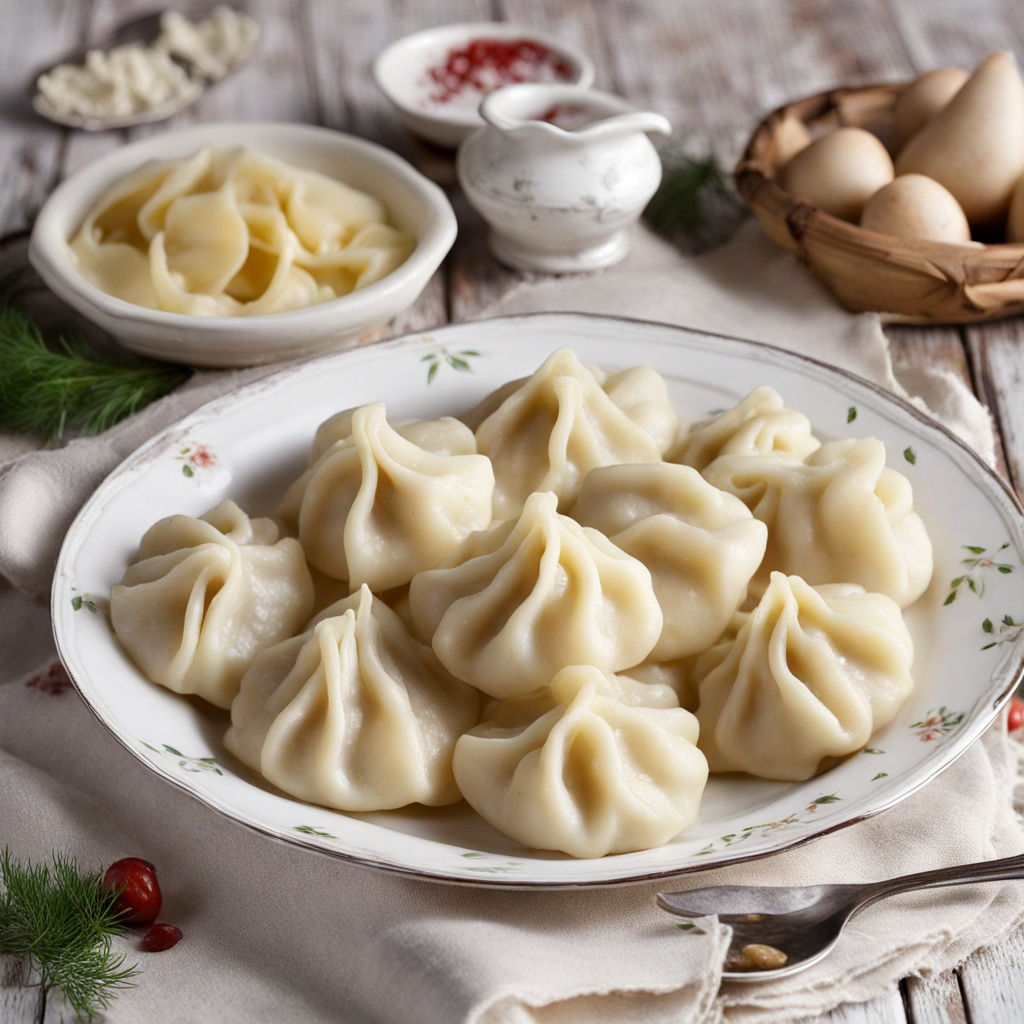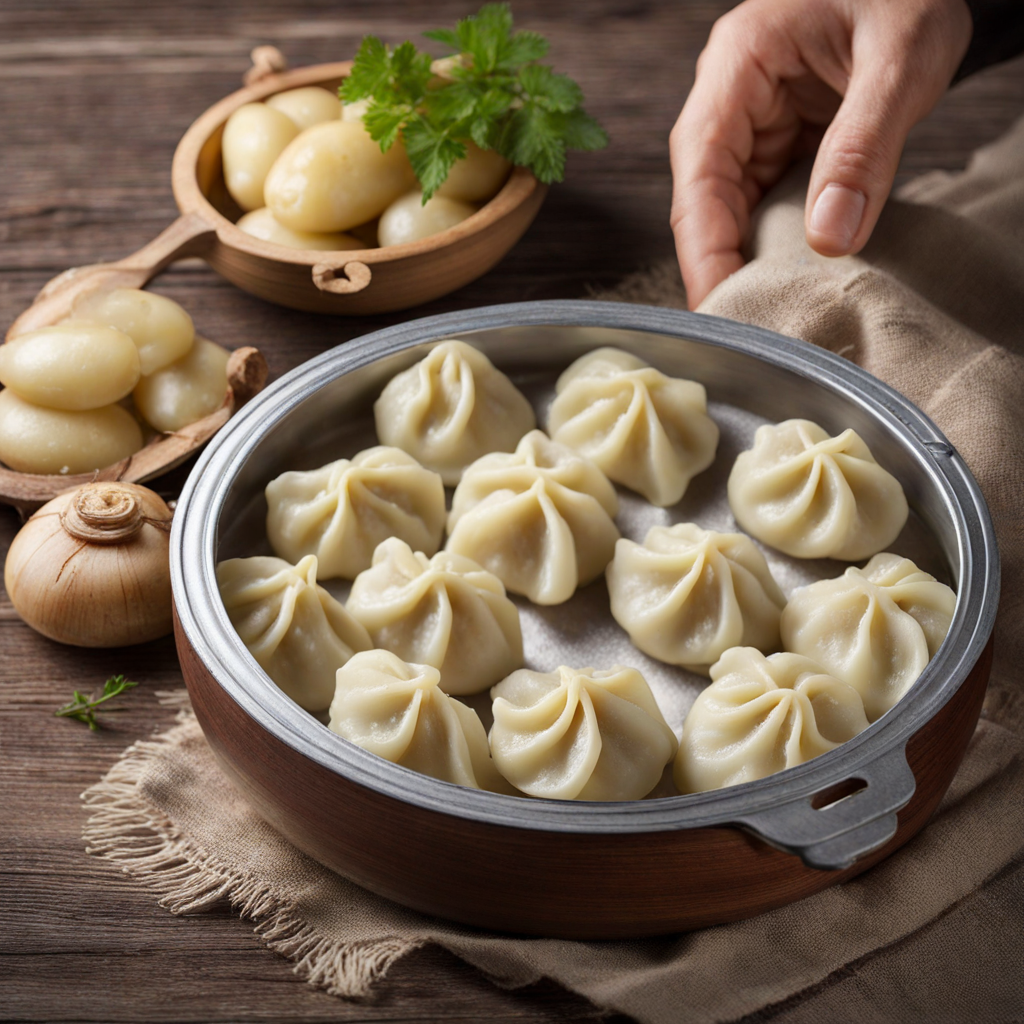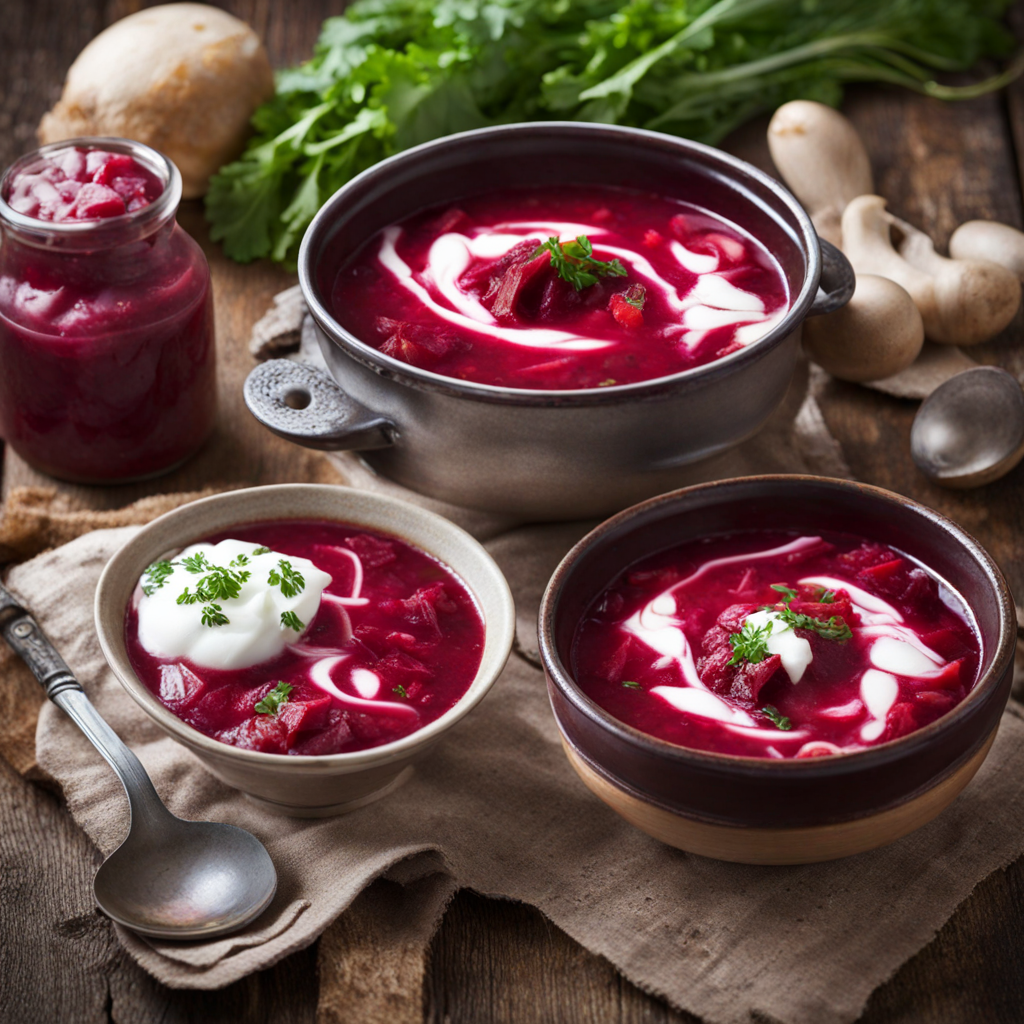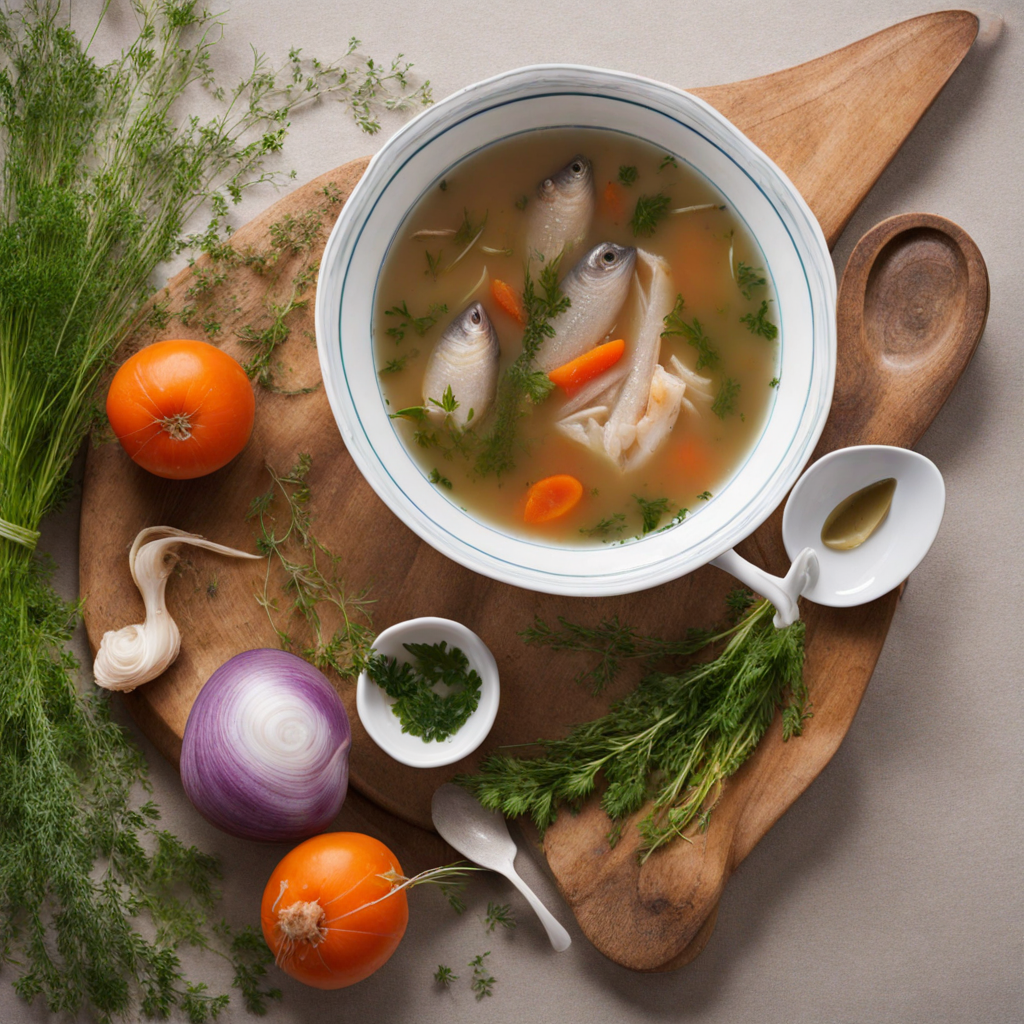Vareniki
Vareniki are delightful dumplings that originate from Eastern European cuisines, particularly popular in Russia and Ukraine. These tender pockets of dough are typically filled with a variety of ingredients, ranging from savory to sweet. The dough itself is made from simple ingredients like flour, water, and eggs, which creates a soft and pliable texture that envelopes the filling beautifully. Vareniki are often boiled, resulting in a tender exterior that pairs perfectly with a multitude of toppings, such as sour cream, melted butter, or fried onions, enhancing their rich flavors. The fillings of Vareniki are what truly set them apart and offer a world of culinary exploration. Classic savory options include mashed potatoes, sauerkraut, mushrooms, and cottage cheese, each providing a unique taste experience. For those with a sweet tooth, Vareniki can also be filled with fruits like cherries, blueberries, or sweetened curd, making for an irresistible dessert. The balance of flavors and textures in each bite is remarkable, with the doughy exterior giving way to a burst of flavorful filling, making them a comforting dish that can be enjoyed at any time of day. Vareniki are not just a meal; they are a cultural experience, often associated with family gatherings and traditional celebrations. The process of making Vareniki is frequently a communal activity, with family members coming together to prepare the dough and choose their favorite fillings. This connection to heritage and the joy of sharing a homemade dish adds to the overall experience of tasting Vareniki. Whether enjoyed at a cozy family dinner or a festive celebration, Vareniki invite you to savor a piece of Eastern European culture with every delicious bite.
How It Became This Dish
The Delicious History of Вареники: A Culinary Treasure of Russia Origins and Historical Context Вареники, also known as varenyky, are a traditional Eastern European dumpling that holds a special place in Russian cuisine as well as in the culinary traditions of neighboring countries like Ukraine and Poland. The term "вареники" derives from the Russian word "варить," meaning "to boil," which aptly describes the cooking method for these delightful dumplings. The origins of вареники can be traced back to ancient Slavic cultures, where they were likely a simple combination of flour and water, filled with what was available in the local environment. Anthropological studies suggest that dumplings in various forms have existed across many cultures for millennia. In Slavic regions, they were likely developed around the 9th century AD, during a time when agricultural practices were flourishing. The availability of wheat and other grains allowed communities to experiment with new recipes, leading to the creation of various types of dumplings. Cultural Significance Вареники are more than just a dish; they embody the spirit of Russian hospitality and family traditions. They are often associated with gatherings and celebrations, served as a symbol of abundance and comfort. In Russia, вареники are traditionally filled with an array of ingredients, ranging from sweet fillings like cherries, blueberries, and cottage cheese, to savory options including potatoes, sauerkraut, and mushrooms. This versatility makes them suitable for a variety of occasions, from festive celebrations to everyday meals. In the Russian Orthodox tradition, вареники are popular during Lent, serving as a meatless dish that can be enjoyed without sacrificing flavor. The preparation and consumption of вареники often involve the entire family, fostering a sense of community and shared culture. The act of making вареники is often passed down through generations, with families developing their unique recipes and methods. Development Over Time Over the centuries, вареники have evolved, influenced by regional ingredients, cultural exchanges, and historical events. During the 18th and 19th centuries, as Russia expanded its territory and came into contact with various ethnic groups, the recipes for вареники diversified. Each region adopted the dish, adding local flavors and ingredients. For instance, in Siberia, where hearty meals were essential for surviving the harsh winters, вареники might be filled with meat or root vegetables, while in the southern regions, they might include fruits and berries. The Industrial Revolution in the 19th century also played a significant role in the popularization of вареники. As people moved to urban areas for work, they sought convenient and affordable meals that could be prepared quickly. Varenyky became a staple for urban dwellers, often sold by street vendors and in markets, making them accessible to a broader audience. This urbanization further cemented вареники's status as a comfort food, cherished by people from all walks of life. In the 20th century, the Soviet era brought about significant changes in food production and availability. While many traditional foods were difficult to find due to shortages, вареники remained a beloved dish. Home cooking became a means of preserving cultural identity in the face of political challenges. During this time, the fillings for вареники often reflected what was available, leading to creativity and improvisation in their preparation. The dish continued to be a symbol of home and warmth, a way for families to bond over shared meals. Modern Interpretations and Global Influence Today, вареники continue to thrive, both in Russia and internationally. With the rise of global cuisine and the fusion of culinary traditions, вареники have been embraced by food enthusiasts around the world. Chefs are experimenting with innovative fillings, incorporating international flavors and techniques, while still honoring the traditional methods of preparation. In contemporary Russia, вареники can be found in both home kitchens and high-end restaurants. They are often served with sour cream, a traditional accompaniment that enhances their flavors. Street food culture has also embraced вареники, with food trucks and stalls offering gourmet versions, showcasing the dish's adaptability and enduring appeal. The internet and social media have also contributed to the resurgence of interest in traditional foods like вареники. Cooking blogs, YouTube channels, and social media platforms allow individuals to share their family recipes, techniques, and stories, creating a global community of вареники lovers. This resurgence has sparked a renewed appreciation for the cultural significance of the dish and its role in celebrating heritage. Conclusion Вареники are more than just a delightful dumpling; they represent a rich tapestry of history, culture, and community. From their humble beginnings in ancient Slavic kitchens to their status as a beloved comfort food in modern times, вареники have withstood the test of time. They are a testament to the resilience of culinary traditions, adapting and evolving through centuries of change while remaining a cherished symbol of home and family. As we savor these delightful dumplings, we are not only enjoying their delicious flavors but also partaking in a legacy that spans generations. Whether filled with sweet fruits or savory vegetables, вареники remind us of the importance of food as a means of connection, celebration, and cultural identity. In every bite, we taste the history of a land and its people, making вареники an enduring culinary treasure of Russia.
You may like
Discover local flavors from Russia







